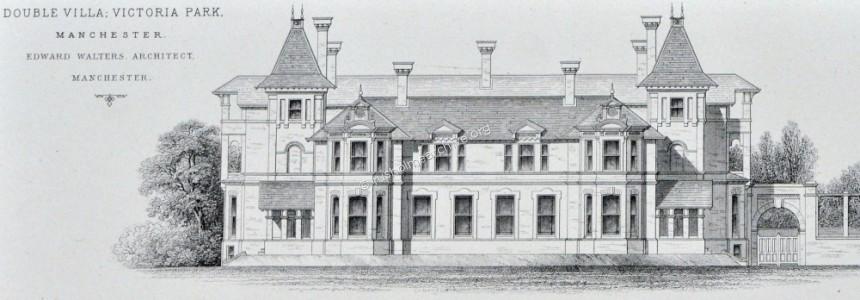Rusholme & Victoria Park Archive
'The Manchester Real Ice Skating Rink Company'
It was in May 1876 in the King’s Road, Chelsea, that the world witnessed the opening of the first water based artificial ice rink: The Glaciarium. Its inventor, Professor John Gamgee, had hit upon the idea while engaged in experiments on the production of refrigeration for the preservation of meat.
An expensive process it involved flooding the floor of the rink with water to a depth or 2-3 inches over flattened copper pipes. A combination of ether, glycerine and water, was then pumped through the pipes. Chemical reactions produced intense cold in the pipes which then froze the water.
In June 1876 the Manchester Real Ice Skating Company was established with a capital of £25,000.00, (5000 shares @ £5.0 each). The company paid Professor Gamgee some £8000.00 for the exclusive use of his process within 10 miles of Manchester.
On January 13th 1877 the company opened what was considered the first skatable ice rink in the country at Moor Street in Rusholme.
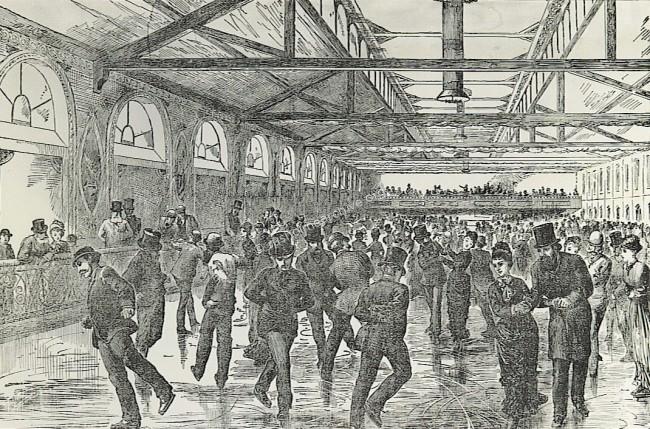
It was reported in the local press that;
'The Directors of the Company have made the most handsome provision for the convenience of skaters, especial attention having been paid to the comfort of ladies, who are to have their own apartments, entirely removed from those of the other sex. Elegantly decorated throughout the entire establishment there is evidence of a refined and cultivated taste'.
The rink measured 112ft by 36ft and ambitiously the company had made provision on the site to double the size of the rink if there was sufficient demand.
All around the rink there was a raised stand for spectators, at one end a balcony was provided for the band and smokers, whilst at the other end another balcony was for non-smokers!
Admission charges were 1/6d(7.5p) in the morning, 2/6d(12.5p) for the afternoon and 1/- (5p) for the spectators, whilst special rates were offered for schools.
The rink became popular with the curling teams in Manchester.
The Graphic paper published the following picture and article below in March 1877.
Curling at the Rusholme Ice Rink, March 24th 1877.
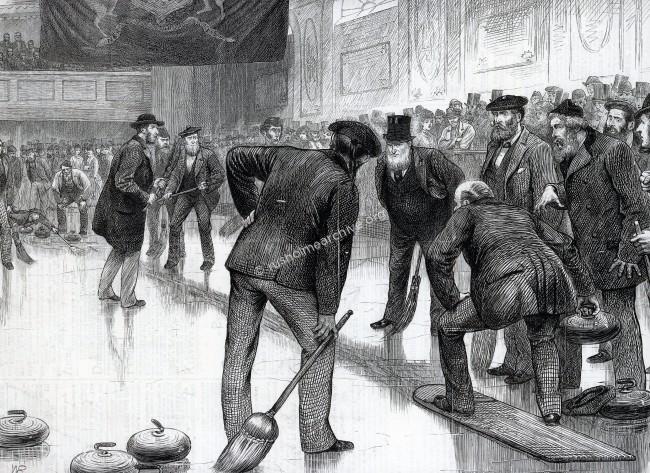
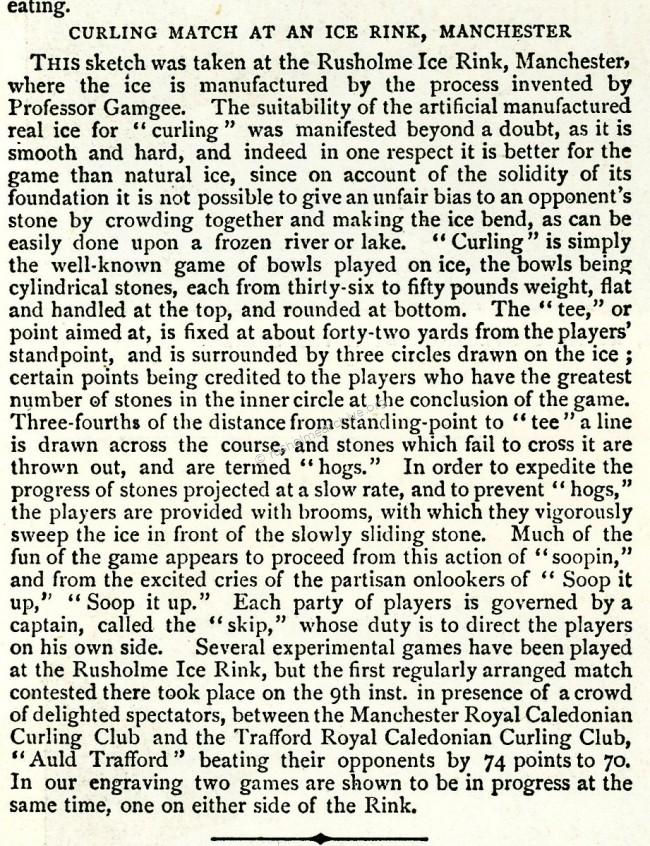
Clearly a popular sport!
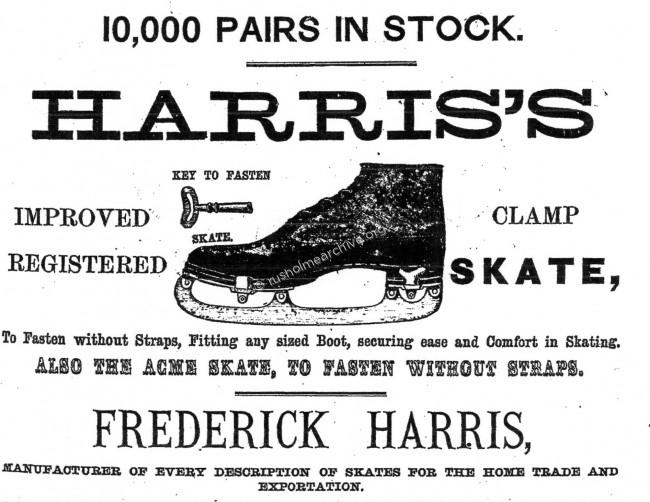
The Rusholme Ice Skating Rink was not successful. Within 6 months by June the company was £10,000.00 in debt. The creditors consented to a further period of trading to see if the company would become profitable but the patience of the builders did not last much longer and on November 10th 1877 the company was compulsorily wound up.
Why did the business fail in such a short time? Was Rusholme a good location? Professor Gamgee had a brother, (also a professor) at the University in Manchester. He might have offered a view that in this prosperous area, ( remember Victoria Park was across the road!), the very high cost of admission, 12.5p, would be acceptable. 12.5p was at a time when working men might have only been earning £1.00 per week, and a maid in the big houses in the Park would only have received a few pounds per annum. So it was a very fortunate few that could afford to use the rink. Apparently the maintenance costs of the new freezing equipment was very high, there was a band provided for music, (no piped music available), so the running costs clearly were very high. The money must have just ran down the drain....................................
In the map below published in 1879 Moor Street was to the west of Wilmslow Rd and was just about opposite Rusholme Grove. As you can see from the map the site occupied by the rink is described as 'disused'.
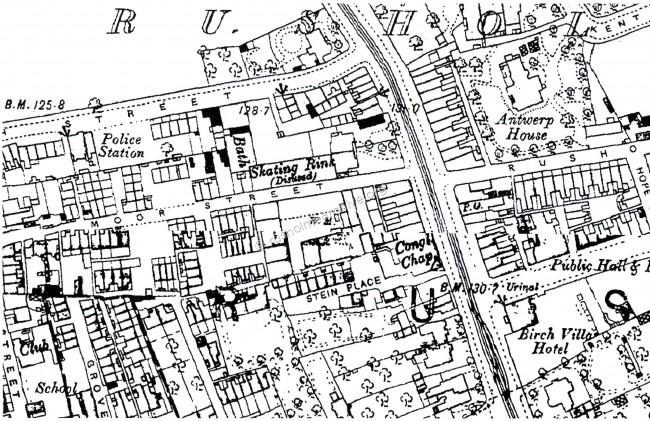
In the Manchester Guardian, 26th October 1910 an article about ice-skating referred to the Rusholme Ice-rink, adding that after its closure it became the Victoria Hall, 'and is now used as a public Ballroom'.
Finally in 1912 a cinema was opened and the Rusholme Trocadero remained on the site for some 60 years.
